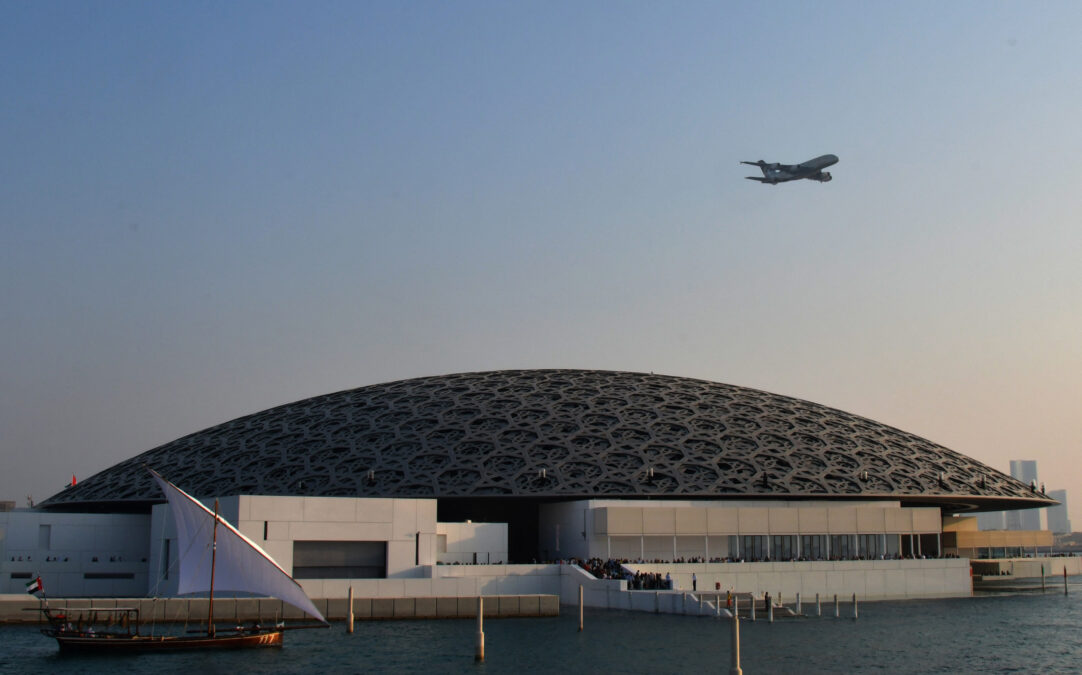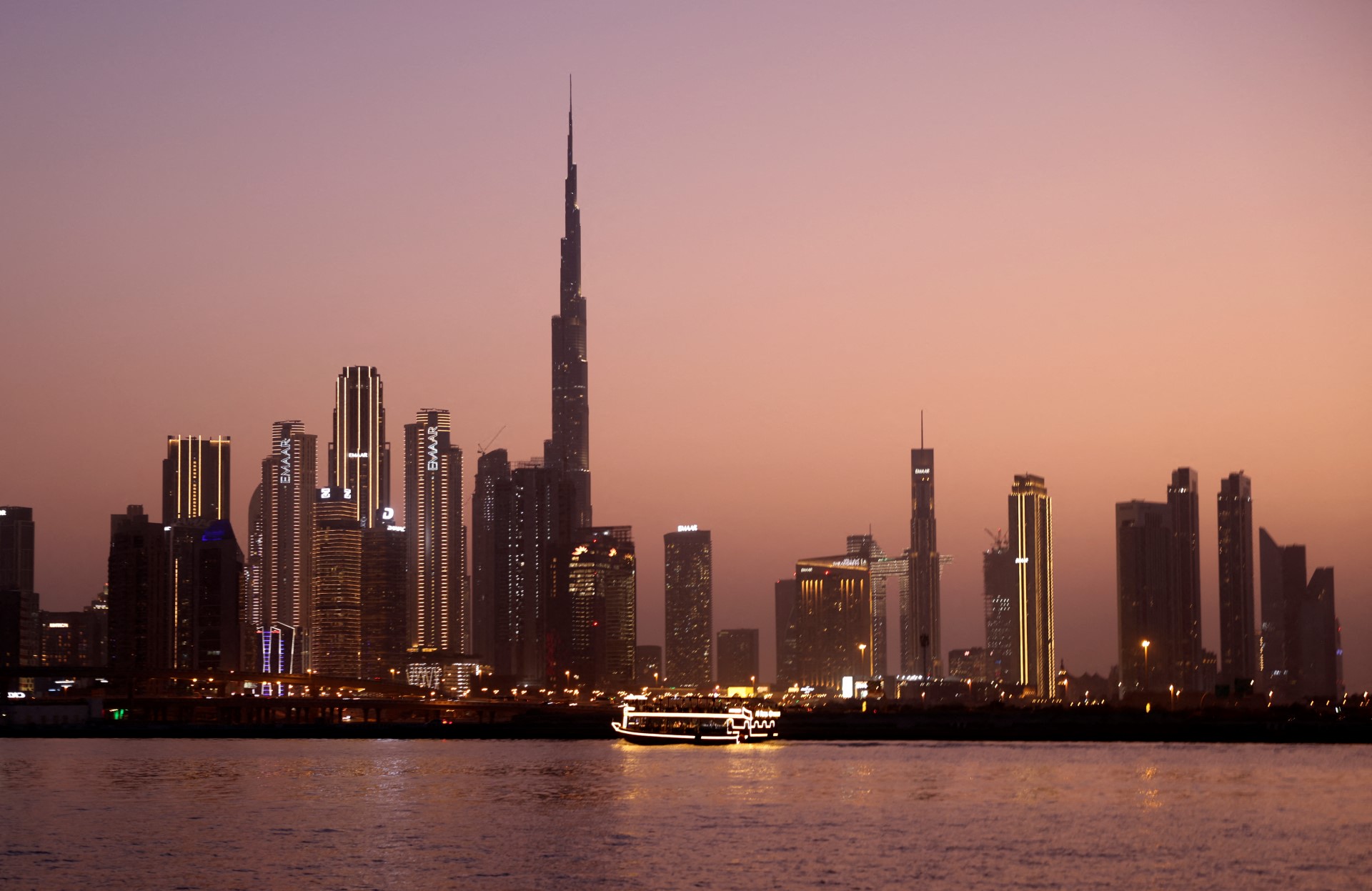Dubai, UAE – When the COVID-19 pandemic struck in early 2020, the thriving GCC tourist inflows like everywhere else came suddenly to a grinding halt. A year before, the travel and tourism sector in the region accounted for $245 billion or 8.6 percent of total GDP, according to the World Travel and Tourism Council. Four years on, the GCC has not just recovered faster than was expected, but it has also led the global tourism recovery with a 122 percent surge in arrivals in 2023 compared to 2019.
And this hasn’t happened accidentally. The region has assiduously worked for it with its two major economies, Saudi Arabia and the UAE, embarking on economic diversification with tourism promotion one of the thrust areas. The countries have individually and collectively worked to a plan: A collaborative effort between federal and local authorities, national airlines, and private institutions has resulted in the formulation of a comprehensive tourism strategy aimed at promoting GCC attractions, enhancing service quality, and fostering sustainable practices, according to a report by Oxford Business Group (OBG). Dubbed the Gulf Tourism Strategy, the initiative was unveiled during the sixth meeting of GCC ministers of tourism held at Al Ula in Saudi Arabia in November 2022. Subsequently endorsed at the 43rd session of the Supreme Council of the GCC in Riyadh in December 2022, the strategy underlines key objectives such as diversifying existing offerings and elevating service standards.
The strategy, the OBG report pointed out, sought to leverage collective strengths among GCC countries, and emphasized the exchange of best practices and joint initiatives to enhance the region’s appeal to tourists. Factors such as the Gulf’s exemplary safety record, as indicated by the 2023 Numbeo Safety Index, which ranked Qatar as the safest country globally, contributed to positioning the region as a secure destination for travelers, particularly in the wake of the pandemic. Moreover, the geographical proximity of Gulf countries to major markets in Europe, Asia, and Africa enhanced accessibility and minimized travel time and expenses.
The region’s robust air connectivity, exemplified by major hubs such as Dubai, Doha and Riyadh is complemented by the expansion of national carrier networks, with the UAE and Qatar boasting the most extensive fleets, according to a January 2023 report from the Gulf Center for Studies and Research.

Recognizing the significance of collaboration, the Gulf Tourism Strategy has aimed to foster a unified vision among GCC members to capitalize on their competitive advantages and ensure equitable distribution of benefits across the region.
Aligned with national tourism strategies, the pan-GCC initiative has endeavored to generate tangible outcomes such as job creation and increased GDP contribution, facilitating economic diversification and sustainable development across member countries.
The sector has played a substantial role in economic development, contributing significantly to the region’s income. The growth in tourist arrivals has translated into increased revenues, accounting for around 9 percent of the region’s GDP.
Forecasts predict an average annual growth rate of 7.7 percent in the region’s tourism industry up to 2032, three times the 2.5 percent growth rate for the overall economy. That is, if the current global conflicts in Gaza and Ukraine do not aggravate and the new geopolitical conflicts impacting the region do not break out.
Future perfect
The travel and tourism sector in the Middle East is expected to grow in 2024 on the back of the region’s robust air connections, diversified tourism offerings and strategic investments.
Leading this tourism surge in the region is Saudi Arabia and the UAE. A recent report from the UNWTO reveals that Saudi Arabia experienced a 156 percent rise in tourist arrivals in 2023 compared to 2019, marking a significant rebound for the tourism sector following the end of the COVID-19 pandemic.

Saudi Arabia, the largest oil exporter globally, is undergoing a significant economic transformation propelled by its Vision 2030 diversification agenda. The strategic shift aims to decrease reliance on oil, foster the growth of domestic industries, and stimulate job creation. In alignment with this vision, the kingdom is spearheading various expansive projects such as Qiddiya, the futuristic $500 billion Neom city, the Red Sea Project, and the Diriyah Gate heritage development.
UAE and Saudi Arabia were among the top 10 destinations worldwide witnessing significant growth in international tourism in 2023, according to a report by travel analysis company ForwardKeys.
The analysis, which considered international tourist arrivals for 2023 indicated a promising recovery for the global tourism sector post-pandemic. The Middle East and Africa region, in particular, have demonstrated notable performance in this regard.
Saudi Arabia ranked fifth globally in terms of international arrivals, having returned to pre-Covid levels for inbound visitors. Factors contributing to this include the influx of Hajj pilgrims, strategic marketing efforts to promote tourism, and economic diversification initiatives.
The UAE secured the eighth position on the list, with tourist arrivals just 7 percent below pre-pandemic levels. Key drivers for the UAE’s growth include increased visitors from India, the US and Russia, as well as strong air connectivity facilitating travel, especially from China.
Dubai alone received more tourists than ever before in 2023, attracting 17.15 million international overnight visitors over the course of the year, according to the data published by Dubai Department of Economy and Tourism (DET). This represented a 19.4 percent YoY growth over the 14.36 million tourist arrivals in 2022. In 2019, the city had received 16.73 million visitors.
The performance further improved Dubai’s ranking as the No.1 global destination for an unprecedented third successive year in the Tripadvisor Travellers’ Choice Awards 2024, the first city to achieve this accolade. According to the Tourism Performance Report launched by Dubai Tourism, the top three source markets were Western Europe (19 percent), South Asia (18 percent) and the GCC (16 percent).
Qatar and Oman
Qatar, on the other hand, welcomed over 4 million visitors in 2023, achieving a five-year high. The accomplishment, recently announced by the Qatar Tourism Authority, reflects the country’s success in leveraging the momentum of the FIFA World Cup Qatar 2022, according to a press note.
In 2023 also, the country, the UNWTO figures reveal, was the top-performing destination worldwide for the first nine months of 2023, at over 91 percent international tourist arrivals compared to 2019.
In another significant development recently, the country in a strategic move to facilitate travel, streamlined its visa procedure with the implementation of the Hayya platform earlier last year. The initiative simplifies the mechanism for travelers to enter Qatar and complements the nation’s liberal travel policies, which already allow visas on arrival for citizens from 95 countries.
Additionally, a year-long calendar packed with events and engaging marketing campaigns has significantly contributed to the surge in tourism.
“Qatar’s diverse tourism offering, with its 500 km of pristine coastline, world-class museums, and cultural and contemporary destinations, combine to make for a unique and compelling holiday that can be tailored to suit regional and international travelers,” said Saad Al-Kharji, chairman of Qatar Tourism Authority, early this year while expressing pride in Qatar’s growing global appeal as a tourism destination.
“New developments in Qatar’s tourism sector are ongoing, creating even further opportunities for growth,” he added.
Leading the influx of tourists to Qatar since the start of 2023 were visitors from Saudi Arabia, accounting for 25.3 percent of total international arrivals. They were followed by travelers from India with 10.4 percent, Germany with 4.1 percent, the UK with 3.9 percent and Kuwait with 3.5 percent.
In 2023, Oman welcomed 4 million tourists, marking a nearly 38 percent rise from the 2.9 million visitors in 2022. Of these, 231,000 were from Germany, a whopping 182% growth from the year before.
The figures were shared by Qatar’s Under-Secretary for Tourism at the Ministry of Heritage and Tourism, Azzan bin Qasim al Busaidy, at a recent press briefing.

Al Busaidy said that the numbers were achieved through streamlining visa application processes and easing visa restrictions for citizens of over 100 countries, as well as investing in infrastructure and attractions.
“In fact, we have ambitious plans for our tourism sector, with over $5.9 billion of investment currently funneled into over 360 projects,” he said at the briefing. “We lay emphasis on Oman’s 2050 Net-Zero target, sustainable practices and our responsibilities to future generations, these range from hotel accommodation and resorts to the preservation of heritage sites and historical monuments.”
Egypt also made it to the global top-tier tourism destinations, ranking tenth, with international arrivals in 2023 estimated to be 10 percent below pre-pandemic levels. Factors such as the return of Russian travelers and Egypt’s appeal as a historical destination contributed to its position.
Outbound tourism
The outbound tourism sector in the GCC countries is also poised for substantial growth over the next decade, with estimations suggesting a steady increase in revenue. According to a forecast by Future Marketing Insights, the industry is expected to witness a moderate Compound Annual Growth Rate (CAGR) of 7.8 percent from 2024 to 2034. In 2024 alone, the outbound tourism industry in the GCC is projected to generate revenue amounting to $75,126.10 million, a figure that is expected to surge significantly to $158,880.1 million by 2034.
Key drivers fueling this growth include the rising trend of consumer expenditure on international travel, a conspicuous increase in the number of foreign tourists departing from GCC countries, and the growing popularity of online platforms for flight and travel bookings. These factors collectively contribute to a favorable environment for the expansion of the outbound tourism industry in the region.
Major source markets
India stood as the primary source market within the GCC destination tourism sector in 2022, recording 6.15 million arrivals, with Pakistan following closely. Notably, the UAE hosts a significant expatriate Indian community, particularly engaged in the construction sector. The air connectivity between India and the UAE is extensive, with numerous carriers linking various cities, enabling affordable travel through the availability of low-cost flights.
Other major source markets are the US, the UK and China.
ATM focus on India
The Arabian Travel Market 2024, slated for May 6-9, is poised to highlight the burgeoning Indian outbound market, forecasted to reach a yearly expenditure of $143.5 billion by the decade’s end. The Middle East, especially the UAE and Saudi Arabia, remain favored destinations for Indian travelers.
India is now the fifth-largest economy, and its population has exceeded China’s to become the largest in the world, at over 1.4 billion people.
A joint report by booking.com and McKinsey highlights that 70 percent of Indian travelers prefer nearby destinations when journeying abroad, with a third selecting Middle Eastern locales. The UAE emerges as the primary regional choice – being consistently the most visited destination by Indian tourists from 2010 to 2022 – closely trailed by Saudi Arabia. Statistics include India’s status as Dubai’s primary source market, with 1.9 million visitors recorded in the first ten months of 2023, while Saudi Arabia targets attracting 7.5 million visitors by 2030.
The Saudi Tourism Authority (STA) recently held a sequence of dynamic networking events spanning four major Indian cities: Mumbai, Ahmedabad, Bengaluru, and Delhi, aimed at fostering connections within the Indian travel trade associations.
The STA delegation, alongside essential stakeholders, actively interacted with more than 500 travel agents and tour operators from these urban centers. The STA also partnered with prominent Destination Management Companies (DMCs) to conduct sales missions across all four cities, establishing meaningful engagements with crucial trade allies.







